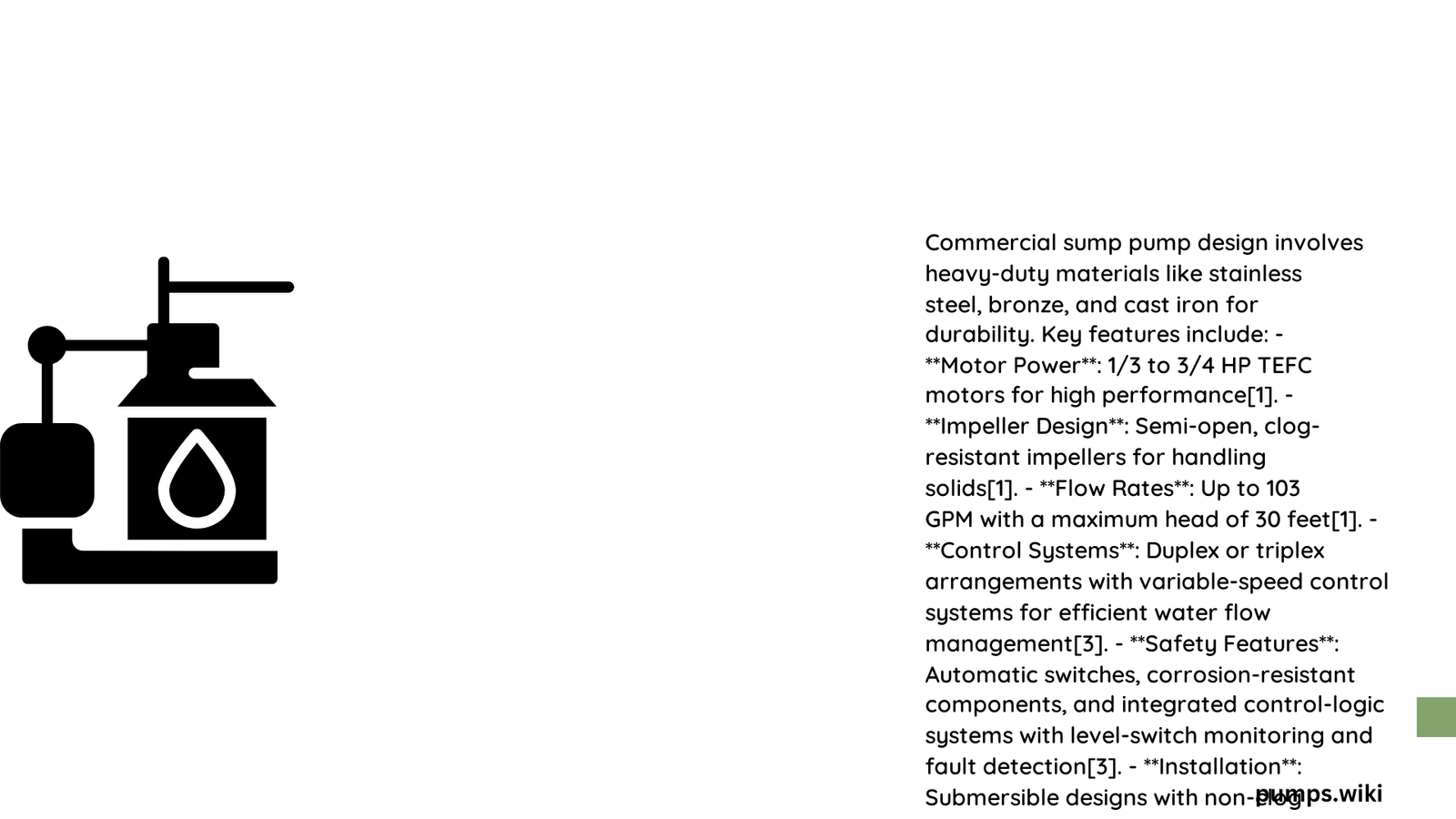Commercial sump pump design represents a critical engineering challenge in water management systems, requiring precise technical specifications and strategic implementation. These sophisticated pumping solutions are engineered to handle high-volume water displacement in complex industrial environments, addressing critical drainage needs with robust mechanical configurations that ensure reliable performance under demanding operational conditions.
What Makes Commercial Sump Pump Design Unique?
Commercial sump pump design differs significantly from residential applications, demanding more sophisticated engineering approaches. Unlike standard residential models, these systems must handle:
- Higher water volumes
- More complex drainage scenarios
- Extreme environmental conditions
- Continuous operational requirements
What Are the Primary Material Considerations?
Commercial sump pumps utilize advanced materials engineered for durability and performance:
| Material | Characteristics | Typical Applications |
|---|---|---|
| Stainless Steel | Corrosion-resistant | High-moisture environments |
| Bronze | Superior thermal conductivity | Chemical processing plants |
| Cast Iron | Exceptional structural strength | Heavy industrial settings |
How Do Flow Rates Impact Pump Selection?
Flow rate determination involves complex calculations considering multiple variables:
- Basin Volume Measurement
- Calculate total water accumulation potential
- Assess maximum expected water inflow rates
-
Determine required pumping capacity
-
Performance Metrics
- Typical flow rates: 77-140 GPM
- Horsepower range: 1/3 to 3/4 HP
- Discharge port sizes: 1 1/2″ to 2″ NPT
What Electrical Specifications Matter?
Critical electrical considerations include:
- Voltage requirements: 115 VAC single-phase
- Amperage range: 7.3 to 16 amps
- Motor type: Totally Enclosed Fan Cooled (TEFC)
- Power cord length: 8-10 feet with quick disconnect
Why Consider Dual Pump Configurations?
Dual pump systems offer significant advantages:
- Enhanced operational redundancy
- Increased total pumping capacity
- Reduced risk of system failure
- Improved maintenance flexibility
What Installation Requirements Exist?
Successful commercial sump pump design demands comprehensive planning:
- Obtain necessary municipal permits
- Ensure compliance with electrical codes
- Verify appropriate plumbing connections
- Plan for regular maintenance access
How to Calculate Pump Capacity?
Capacity calculation formula:
Flow Rate (GPM) = Total Water Volume (Gallons) ÷ Pumping Time (Minutes)
What Maintenance Strategies Optimize Performance?
Recommended maintenance protocols:
- Regular inspection of mechanical components
- Monitor electrical connections
- Check float switch functionality
- Assess structural integrity
- Evaluate pump efficiency periodically
Key Takeaways

Commercial sump pump design requires:
– Precise engineering
– Robust material selection
– Comprehensive performance analysis
– Strategic installation planning
Reference:
– AMT Pump Company Industrial Sump Pumps
– Liberty Pumps Commercial Solutions
– Pentair Pump Technologies
